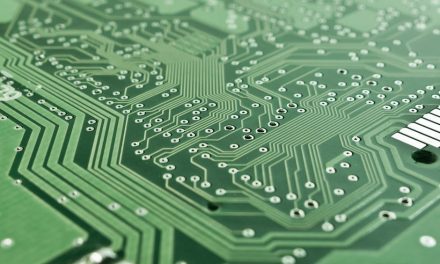Table of Contents
“Stay Ahead of the Curve: Unleash the Power of Emerging Technologies in 2023”
Introduction
Emerging technologies are constantly shaping the business landscape, and leaders must stay informed about the latest advancements to remain competitive. As we approach 2023, several key technologies are poised to have a significant impact across industries. These technologies include artificial intelligence (AI), blockchain, augmented reality (AR), Internet of Things (IoT), and quantum computing. Understanding these emerging technologies and their potential applications is crucial for leaders to make informed decisions and drive innovation within their organizations. In this article, we will explore these technologies and discuss why leaders need to closely watch their development in 2023.
Artificial Intelligence and Machine Learning Advancements

Artificial Intelligence (AI) and Machine Learning (ML) have been rapidly evolving in recent years, and their advancements are set to continue in 2023. As leaders in various industries, it is crucial to stay informed about the emerging technologies that can potentially transform our businesses and the way we work. In this article, we will explore some of the AI and ML advancements that leaders need to watch out for in 2023.
One of the most significant areas of development in AI and ML is natural language processing (NLP). NLP enables machines to understand and interpret human language, allowing for more effective communication between humans and machines. In 2023, we can expect to see NLP being integrated into various applications, such as customer service chatbots, virtual assistants, and even language translation tools. This advancement will greatly enhance the user experience and improve efficiency in many industries.
Another area of AI and ML advancement to watch out for is computer vision. Computer vision technology enables machines to analyze and understand visual data, such as images and videos. In 2023, we can anticipate significant progress in computer vision, particularly in the fields of object recognition and image classification. This advancement will have profound implications for industries such as healthcare, retail, and manufacturing, where visual data plays a crucial role in decision-making processes.
Furthermore, AI and ML are also making strides in the field of predictive analytics. Predictive analytics leverages AI and ML algorithms to analyze historical data and make predictions about future outcomes. In 2023, we can expect to see more sophisticated predictive analytics models that can provide accurate forecasts in various domains, including finance, marketing, and supply chain management. These advancements will enable leaders to make data-driven decisions and stay ahead of the competition.
In addition to these advancements, AI and ML are also being applied to the field of robotics. Collaborative robots, also known as cobots, are becoming increasingly popular in industries such as manufacturing and healthcare. These robots can work alongside humans, assisting with repetitive tasks and enhancing productivity. In 2023, we can anticipate further advancements in cobot technology, including improved sensing capabilities and enhanced safety features. This will open up new possibilities for automation and collaboration in the workplace.
Lastly, explainable AI (XAI) is an emerging field that leaders should keep an eye on in 2023. XAI focuses on developing AI systems that can provide transparent explanations for their decisions and actions. This is particularly important in industries where trust and accountability are paramount, such as healthcare and finance. As AI becomes more integrated into our daily lives, it is crucial for leaders to understand and trust the decisions made by AI systems. XAI will play a vital role in ensuring that AI is used ethically and responsibly.
In conclusion, AI and ML advancements in 2023 will have a profound impact on various industries. Leaders need to stay informed about these emerging technologies to harness their potential and drive innovation within their organizations. From natural language processing to computer vision, predictive analytics to robotics, and explainable AI, the possibilities are endless. By embracing these advancements, leaders can position themselves at the forefront of technological innovation and gain a competitive edge in the ever-evolving business landscape.
Internet of Things (IoT) and Smart Devices
The Internet of Things (IoT) and smart devices have become increasingly prevalent in our daily lives, and their impact is only expected to grow in the coming years. As we look ahead to 2023, there are several emerging technologies in this space that leaders need to watch closely.
One of the key areas of development in IoT is edge computing. Traditionally, IoT devices have relied on cloud computing for data processing and storage. However, edge computing brings the processing power closer to the devices themselves, reducing latency and improving efficiency. This technology is particularly important for applications that require real-time data analysis, such as autonomous vehicles and industrial automation. Leaders should keep an eye on edge computing as it has the potential to revolutionize the way IoT devices operate.
Another technology that is set to make waves in the IoT space is 5G. With its faster speeds and lower latency, 5G will enable a whole new level of connectivity for smart devices. This means that more devices can be connected simultaneously, and data can be transmitted and processed at lightning-fast speeds. This will open up new possibilities for IoT applications, such as smart cities and connected healthcare. Leaders should be prepared to leverage the power of 5G to drive innovation and gain a competitive edge.
Artificial intelligence (AI) is another technology that is closely intertwined with IoT. AI algorithms can analyze the vast amounts of data generated by IoT devices and extract valuable insights. This can help businesses make more informed decisions and optimize their operations. In the coming years, we can expect to see AI becoming increasingly integrated with IoT devices, enabling them to learn and adapt in real-time. Leaders should explore how AI can enhance their IoT strategies and drive business growth.
Blockchain technology is also poised to have a significant impact on the IoT landscape. Blockchain provides a secure and transparent way to record and verify transactions, making it ideal for IoT applications where trust and security are paramount. For example, blockchain can be used to ensure the integrity of supply chain data or to enable secure peer-to-peer transactions between IoT devices. Leaders should consider how blockchain can enhance the security and reliability of their IoT deployments.
Lastly, leaders should keep an eye on the development of quantum computing in the IoT space. Quantum computing has the potential to solve complex problems at an unprecedented speed, which could have profound implications for IoT applications. For example, quantum computing could enable more accurate weather forecasting or optimize traffic flow in smart cities. While quantum computing is still in its early stages, leaders should stay informed about its progress and explore its potential applications in IoT.
In conclusion, the Internet of Things and smart devices are rapidly evolving, and leaders need to stay ahead of the curve to capitalize on the opportunities they present. Edge computing, 5G, AI, blockchain, and quantum computing are all emerging technologies that will shape the IoT landscape in 2023 and beyond. By understanding these technologies and their potential applications, leaders can position their organizations for success in the increasingly connected world.
Blockchain and Cryptocurrency Innovations
Blockchain and Cryptocurrency Innovations: Emerging Technologies Leaders Need to Watch in 2023
In today’s rapidly evolving digital landscape, emerging technologies have the potential to disrupt industries and reshape the way businesses operate. Among these technologies, blockchain and cryptocurrency innovations have gained significant attention and are poised to make a profound impact in the coming years. As leaders, it is crucial to stay informed about these developments and understand their potential implications for our organizations.
Blockchain, the underlying technology behind cryptocurrencies like Bitcoin, is a decentralized and transparent ledger system that enables secure and immutable transactions. While it initially gained popularity in the financial sector, its applications have expanded to various industries, including supply chain management, healthcare, and real estate.
One of the most promising blockchain innovations to watch in 2023 is the rise of decentralized finance (DeFi). DeFi refers to a set of financial applications built on blockchain networks that aim to provide traditional financial services without intermediaries. These applications include decentralized lending and borrowing platforms, decentralized exchanges, and yield farming protocols. DeFi has the potential to democratize access to financial services, reduce costs, and increase financial inclusion.
Another area of blockchain innovation to keep an eye on is non-fungible tokens (NFTs). NFTs are unique digital assets that can represent ownership of a specific item, such as artwork, music, or virtual real estate. They are built on blockchain networks, ensuring authenticity, provenance, and scarcity. NFTs have gained significant attention in the art world, with high-profile sales and collaborations with renowned artists. However, their potential extends beyond art, with applications in gaming, collectibles, and intellectual property rights.
While blockchain technology has been around for over a decade, cryptocurrencies continue to evolve and present new opportunities. In 2023, leaders should pay attention to the development of central bank digital currencies (CBDCs). CBDCs are digital representations of a country’s fiat currency issued and regulated by the central bank. They aim to combine the benefits of cryptocurrencies, such as fast and secure transactions, with the stability and trust associated with traditional currencies. Several countries, including China and Sweden, have already started piloting CBDCs, and their widespread adoption could reshape the global financial system.
In addition to CBDCs, leaders should also monitor the advancements in privacy-focused cryptocurrencies. While Bitcoin and other cryptocurrencies offer pseudonymity, they are not entirely private. Privacy-focused cryptocurrencies, such as Monero and Zcash, utilize advanced cryptographic techniques to ensure transaction privacy and anonymity. These cryptocurrencies have gained popularity among individuals and organizations concerned about their financial privacy and security.
As leaders, it is essential to recognize the potential benefits and challenges associated with blockchain and cryptocurrency innovations. While these technologies offer exciting opportunities, they also come with risks, including regulatory uncertainties, scalability issues, and potential security vulnerabilities. Therefore, it is crucial to stay informed, collaborate with industry experts, and carefully evaluate the suitability of these technologies for our organizations.
In conclusion, blockchain and cryptocurrency innovations are poised to make a significant impact in 2023 and beyond. Leaders need to stay informed about the latest developments in decentralized finance, non-fungible tokens, central bank digital currencies, and privacy-focused cryptocurrencies. By understanding these emerging technologies and their potential implications, we can position our organizations for success in the digital age.
Augmented Reality (AR) and Virtual Reality (VR) Developments
Augmented Reality (AR) and Virtual Reality (VR) have been steadily gaining momentum in recent years, and their development shows no signs of slowing down. As we look ahead to 2023, it is clear that these emerging technologies will continue to shape the way we live, work, and interact with the world around us.
One of the most exciting developments in AR and VR is the increasing integration of these technologies into everyday life. In the past, AR and VR were primarily associated with gaming and entertainment. However, we are now seeing their applications expand into a wide range of industries, including healthcare, education, and manufacturing.
In the healthcare sector, AR and VR are being used to enhance medical training and improve patient outcomes. Surgeons can now practice complex procedures in a virtual environment, allowing them to refine their skills and reduce the risk of errors during actual surgeries. Additionally, AR is being used to provide real-time information and guidance to healthcare professionals, improving the accuracy and efficiency of diagnoses and treatments.
In the field of education, AR and VR are revolutionizing the way students learn. With the help of these technologies, students can explore historical sites, travel to distant planets, and interact with virtual objects, bringing their lessons to life in a way that was previously unimaginable. This immersive learning experience not only increases student engagement but also improves retention and understanding of complex concepts.
In the manufacturing industry, AR and VR are being used to streamline production processes and improve worker safety. By overlaying digital information onto the physical environment, workers can receive real-time instructions and guidance, reducing the risk of errors and accidents. Additionally, VR simulations are being used to train employees on complex machinery and equipment, allowing them to gain hands-on experience without the need for physical prototypes.
Another exciting development in AR and VR is the advancement of wearable devices. In the past, AR and VR experiences were primarily delivered through bulky headsets or handheld devices. However, we are now seeing the emergence of lightweight, portable devices that can be worn on the body. These devices, such as smart glasses and haptic suits, offer a more seamless and immersive experience, allowing users to interact with the virtual world in a more natural and intuitive way.
Furthermore, the integration of AI and machine learning with AR and VR is opening up new possibilities for these technologies. AI algorithms can analyze user behavior and preferences to deliver personalized experiences, making AR and VR even more engaging and relevant. Additionally, machine learning can be used to create realistic virtual environments and characters, enhancing the overall immersion and realism of AR and VR experiences.
As we look ahead to 2023, it is clear that AR and VR will continue to evolve and transform the way we live and work. From healthcare and education to manufacturing and entertainment, these technologies are revolutionizing industries and unlocking new possibilities. Leaders need to stay informed and embrace these emerging technologies to stay ahead of the curve and harness their full potential. The future of AR and VR is bright, and those who embrace it will undoubtedly reap the rewards.
Q&A
1. What are some emerging technologies that leaders need to watch in 2023?
Artificial intelligence, blockchain, Internet of Things (IoT), and augmented reality/virtual reality (AR/VR).
2. Why is it important for leaders to stay informed about emerging technologies?
Staying informed about emerging technologies allows leaders to anticipate industry disruptions, make informed business decisions, and stay competitive in the market.
3. How can leaders benefit from adopting emerging technologies?
Adopting emerging technologies can lead to increased operational efficiency, improved customer experiences, enhanced data analytics capabilities, and the ability to innovate and differentiate in the market.
4. What challenges might leaders face when implementing emerging technologies?
Leaders may face challenges such as high implementation costs, resistance to change from employees, cybersecurity risks, and the need for upskilling or reskilling their workforce to effectively utilize the new technologies.
Conclusion
In conclusion, there are several emerging technologies that leaders need to watch in 2023. These include artificial intelligence, blockchain, Internet of Things, virtual reality, and 5G. These technologies have the potential to significantly impact various industries and transform the way businesses operate. Leaders should stay informed about these advancements and explore how they can leverage them to gain a competitive edge in the market. By embracing these emerging technologies, leaders can position their organizations for success in the future.




